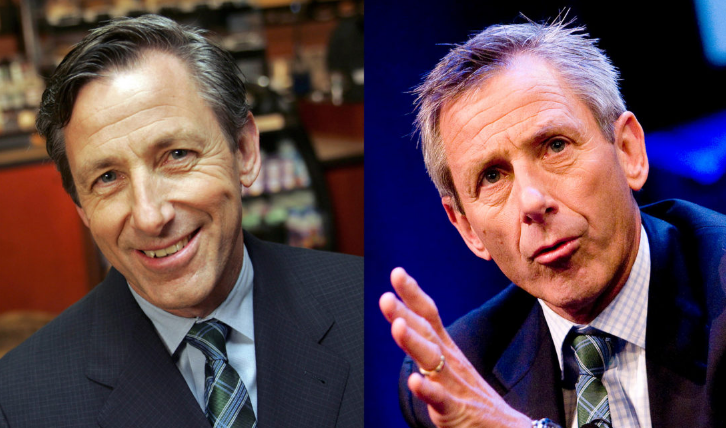You can literally see the lines of stress appear on the face of James Donald, CEO of Starbucks, from 2005 to 2008. Before becoming CEO, he more or less looked his age of 50, with dark hair and just the hint of crow’s feet around his eyes. By the time he left after the financial crisis of 2007–2008, however, his hair was grey, and his eyes and forehead were deeply lined with wrinkles. According to machine-learning analysis, he looked more than five years older than his actual age.
“It’s very clear that living through this crisis led to significantly faster aging,” said Ulrike Malmendier, Berkeley Haas’ Edward J. and Mollie Arnold Professor of Finance. Photographic analysis of Donald and other CEOs living through the financial crash is just one way that Malmendier and colleagues have been able to show the very real effects of stress on lifespan in their new paper, “CEO Stress, Aging, and Death.”
“The health implications of stress are a very under-studied dimension for many jobs,” Malmendier said. “We were interested in seeing how these pressures and tensions at work can make your life more or less fulfilling.” Written as a discussion paper for Europe’s Centre for Economic Policy Research, the paper is co-authored by PhD candidate Marius Guenzel, MS 17, PhD 21, now an assistant professor at the University of Pennsylvania’s Wharton School; Mark Borgschulte, an assistant professor at the University of Illinois; and Canyao Liu, a PhD candidate at Yale.
The health implications of stress are a very under-studied dimension for many jobs. We were interested in seeing how these pressures and tensions at work can make your life more or less fulfilling.
Malmendier and her fellow researchers were interested in studying the impact of stress more generally, but chose to focus on CEOs because of the accessibility of data and the direct way they can be affected by the performance of their firms. They looked for factors that were bound to put tension on the leaders, then measured their effects on life expectancy.
Some states, for example, have laws that protect firms from hostile takeovers, which no doubt lets CEOs sleep easier at night. The researchers examined such laws going back to the mid-1980s, then correlated the dates of their passage with the lifespan of some 1,600 executives who served as CEOs between 1970 and 1991. They found that those CEOs who weren’t insulated from takeovers during their tenures lived an average of two years less than those who were.
“You might think that’s not a lot,” Malmendier said, “but actually it’s huge. It’s comparable to having been born decades later, or to a significant health hazard, such as smoking for years of your life.”
As another way to test the effects of stress, the researchers examined financial shocks to specific industries, comparing CEOs who went through industry turmoil to CEOs in other industries. Once again, they found that stress contributed to knocking about two years off of life expectancy.
As a final measure of stress, the researchers used facial recognition software that employed machine learning to judge the relative ages of CEOs before and after the financial crisis of 2007–2008. The idea was inspired, said Malmendier, by before-and-after pictures of President Obama, who came into office fresh-faced with a full head of short black hair and left eight years later looking haggard and gray.
After submitting more than 3,000 pictures of more than 450 recent CEOs, Malmendier and her colleagues found that the CEOs’ apparent ages increased on average by a little over a year for having gone through the crisis. The fact that all these sources of stress were so visible in people’s faces demonstrates the significant effects that a stressful workplace can have on one’s health—and not just for those at the top, Malmendier said.
“It’s is easier to look at this with CEOs, but I would worry even more about people at the bottom of an organization in dealing with stress and financial constraints,” Malmendier said. She hopes that the study can help lead to further research looking at the impact of workplace stress on health and life expectancy—and what can be done to mitigate it.
It’s is easier to look at this with CEOs, but I would worry even more about people at the bottom of an organization in dealing with stress and financial constraints.
“An important aspect of any job is whether your life has high quality, but that is not always as emphasized as other factors, such as a the financial calculus,” she said. “If people knew that entering a job meant their risk of heart attack would be higher, or they might die earlier, would they make different choices? We hope this is a first step in people thinking about that.”
